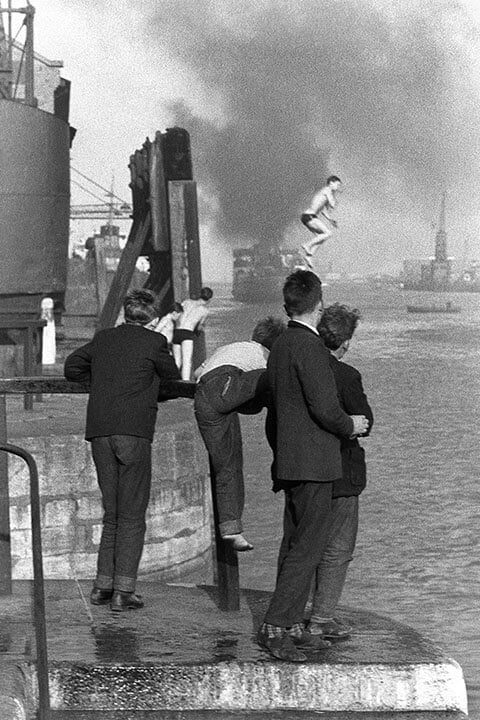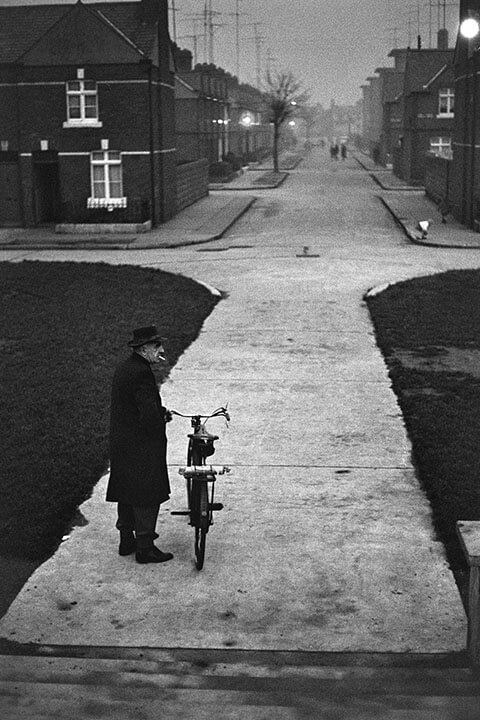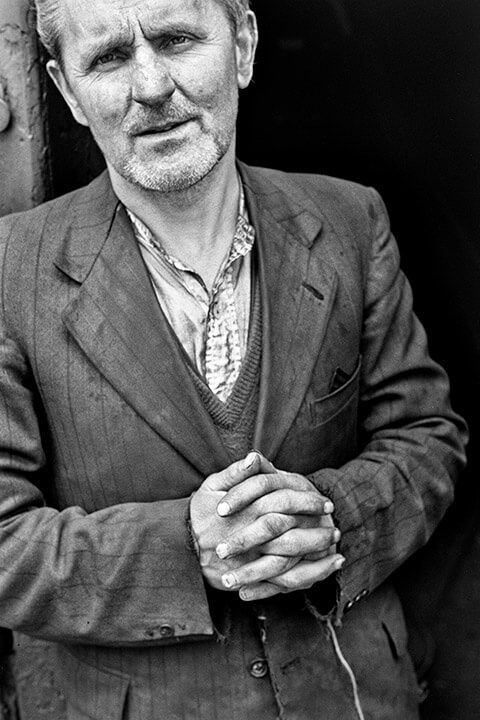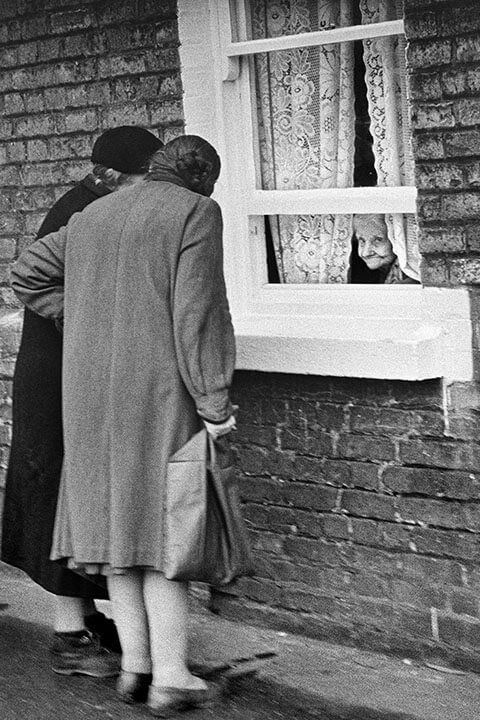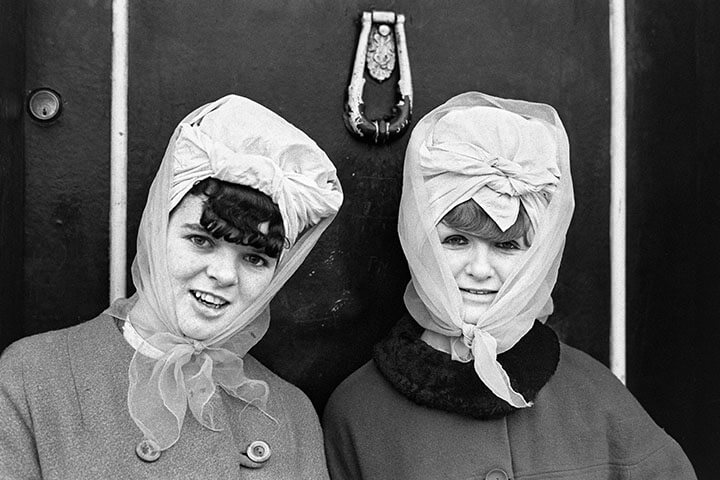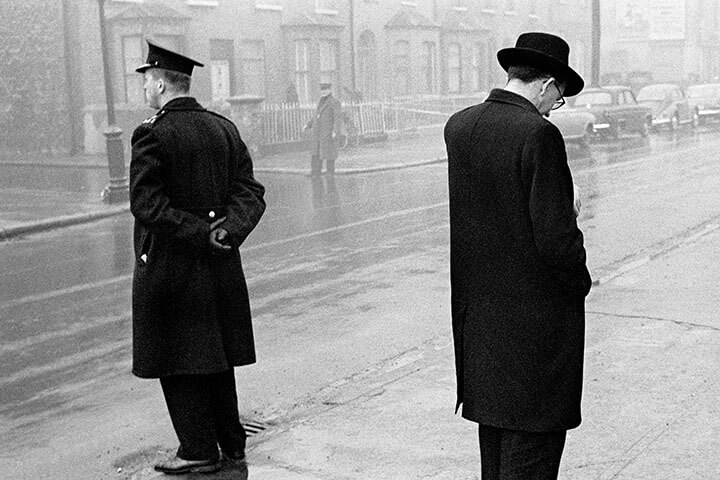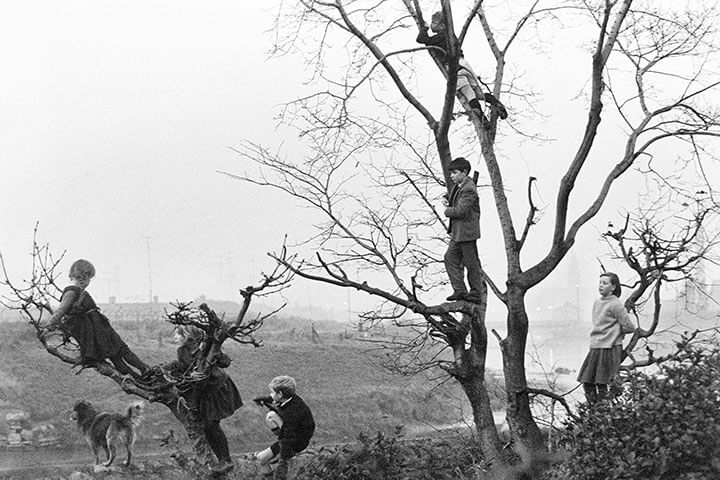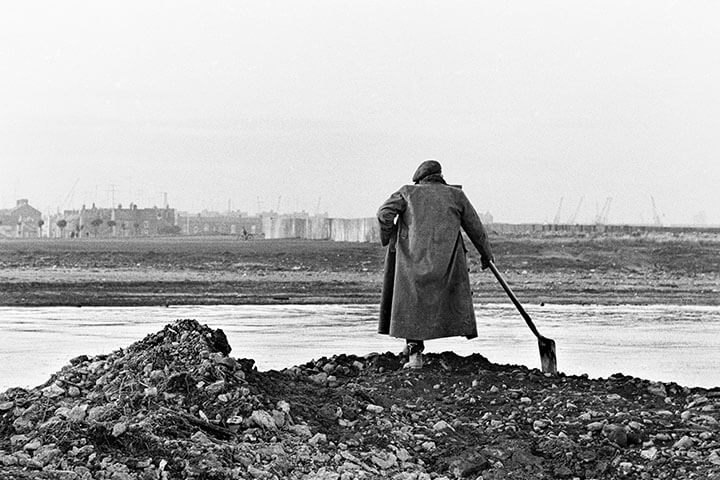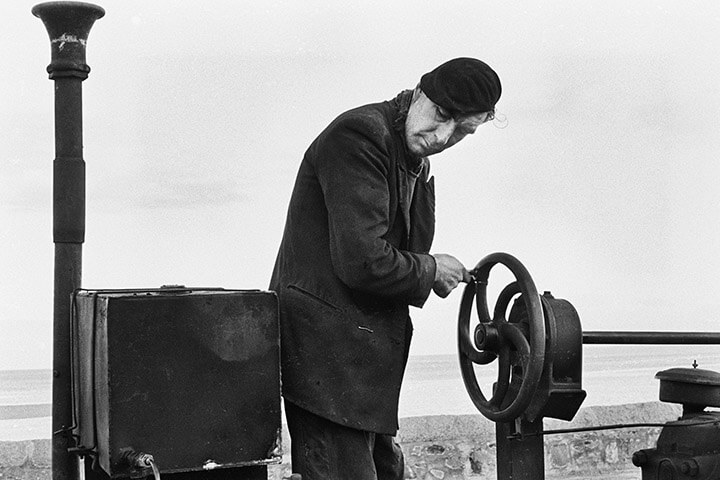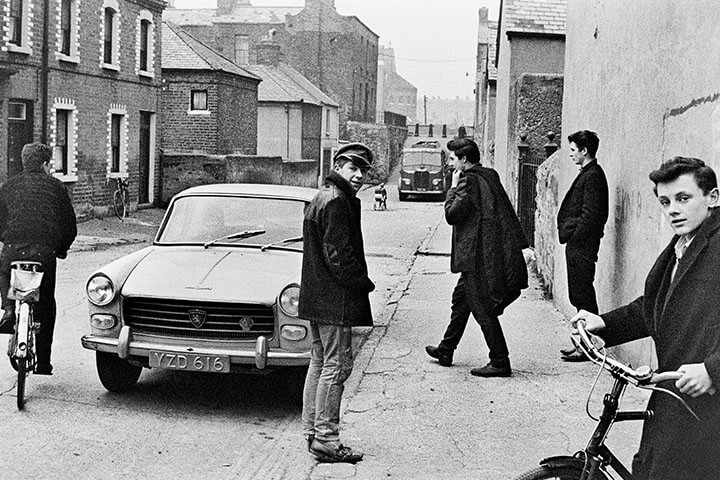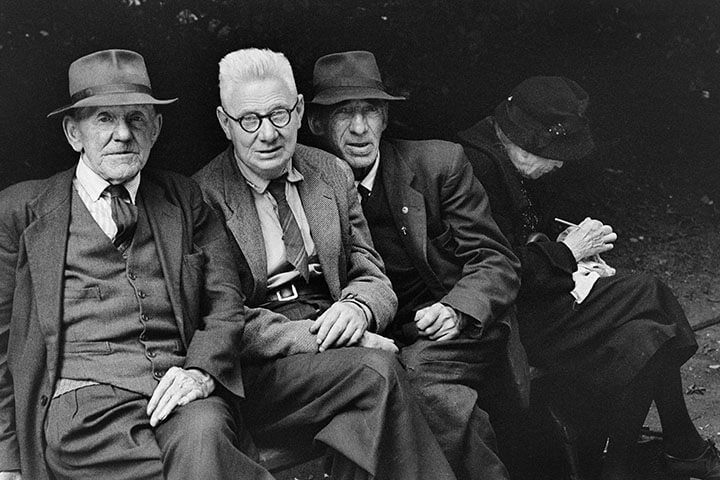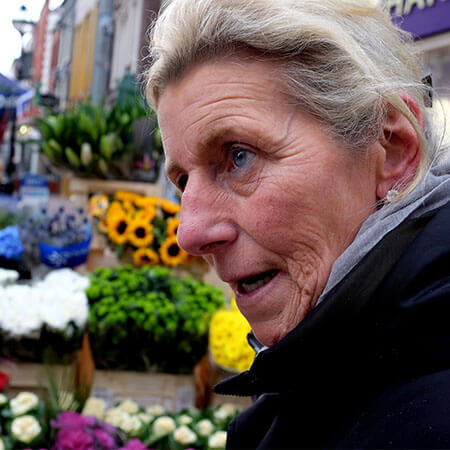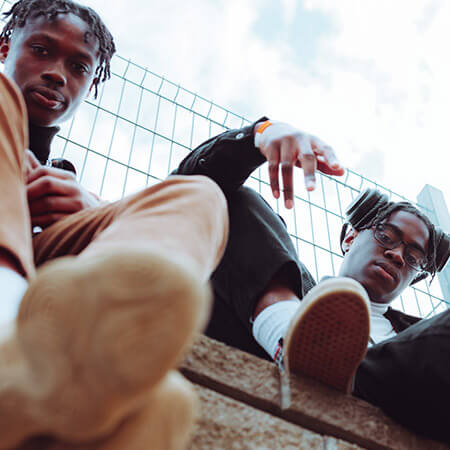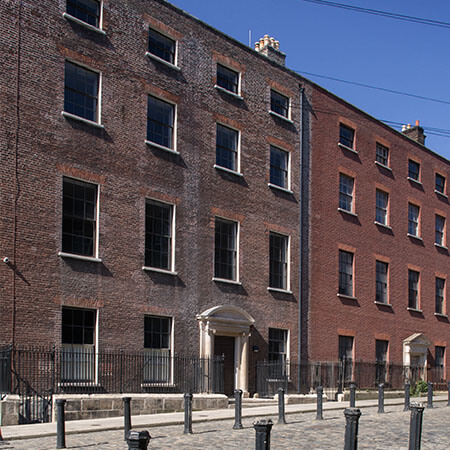Alen MacWeeney, an internationally renowned photographer, born in Dublin in 1939, has launched a new book of photographs entitled ‘My Dublin 1963 // My Dubliners 2020‘. MacWeeney took the 89 black & white pictures that make up the book in Dublin in 1963/5. They are spontaneous images of Dublin and Dubliners in all areas of the city, a street odyssey reflecting a cross-section of the people, their habits and behaviour, ten years before Ireland joined the European Union and the wider world.
The text on facing pages consists of social commentary gleaned from a posting by Pesya Altman, co-author, artist and partner of MacWeeney, of each of the book’s photographs on the Facebook group ‘Dublin Down Memory Lane‘, eliciting a flood of 70,000 responses during 2020. Thus, the idea for the book was born.
